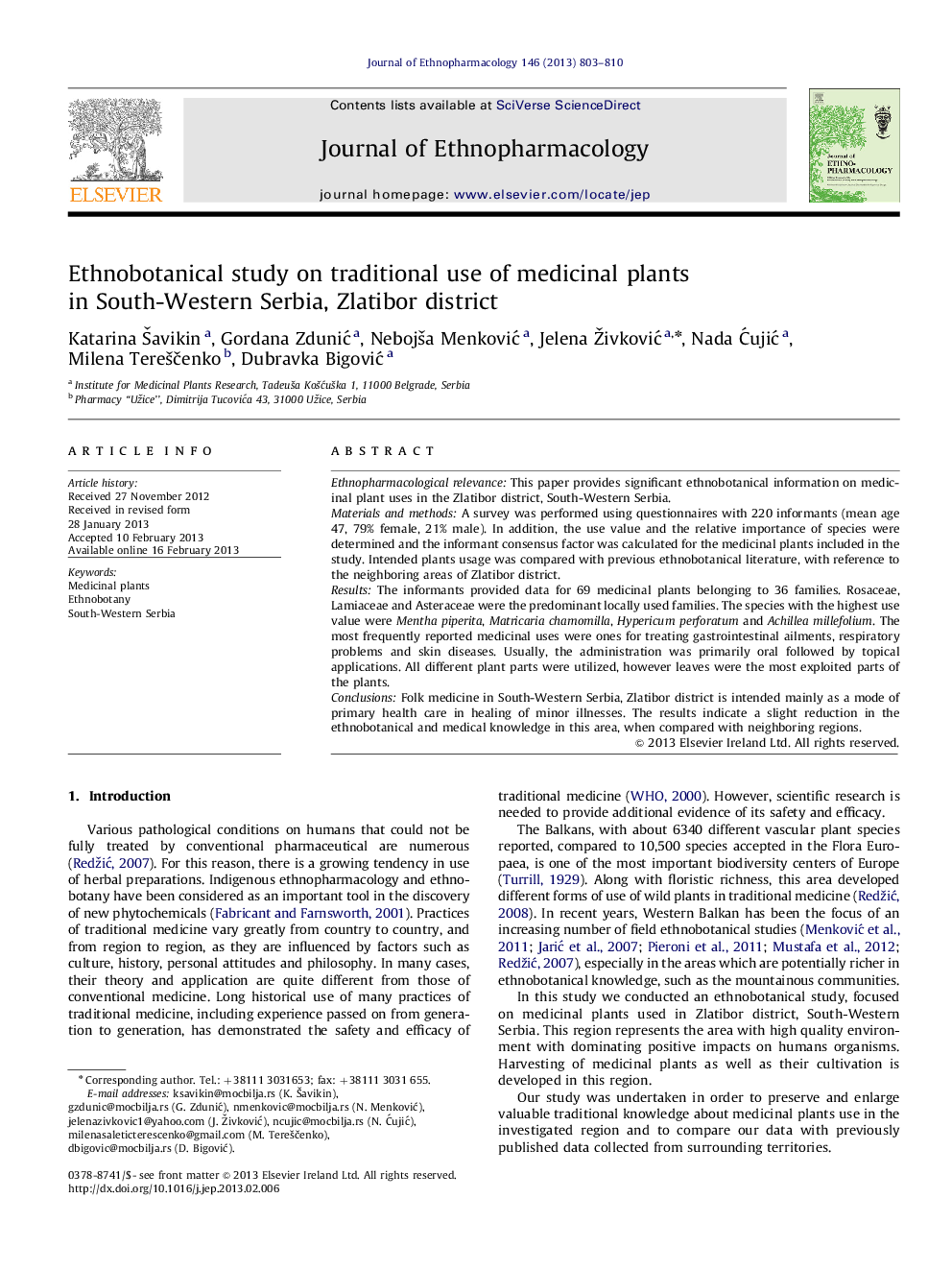| Article ID | Journal | Published Year | Pages | File Type |
|---|---|---|---|---|
| 2545490 | Journal of Ethnopharmacology | 2013 | 8 Pages |
Ethnopharmacological relevance: This paper provides significant ethnobotanical information on medicinal plant uses in the Zlatibor district, South-Western Serbia.Materials and methods: A survey was performed using questionnaires with 220 informants (mean age 47, 79% female, 21% male). In addition, the use value and the relative importance of species were determined and the informant consensus factor was calculated for the medicinal plants included in the study. Intended plants usage was compared with previous ethnobotanical literature, with reference to the neighboring areas of Zlatibor district.Results: The informants provided data for 69 medicinal plants belonging to 36 families. Rosaceae, Lamiaceae and Asteraceae were the predominant locally used families. The species with the highest use value were Mentha piperita, Matricaria chamomilla, Hypericum perforatum and Achillea millefolium. The most frequently reported medicinal uses were ones for treating gastrointestinal ailments, respiratory problems and skin diseases. Usually, the administration was primarily oral followed by topical applications. All different plant parts were utilized, however leaves were the most exploited parts of the plants.Conclusions: Folk medicine in South-Western Serbia, Zlatibor district is intended mainly as a mode of primary health care in healing of minor illnesses. The results indicate a slight reduction in the ethnobotanical and medical knowledge in this area, when compared with neighboring regions.
Graphical abstractFigure optionsDownload full-size imageDownload high-quality image (258 K)Download as PowerPoint slide
